2017 Innovation Grant
The Faculty/Staff Innovation Grant Program encourages faculty and staff to provide innovative instruction and/or student co-curricular support that positively impacts student learning, persistence and/or completion. The F/SIG program will fund projects which support the Strategic Priorities and Goals in the College Strategic Plan and/or Alamo Colleges Strategic Priorities.
1. Becoming one of the Herd: Assessments in Accounting Using COWS
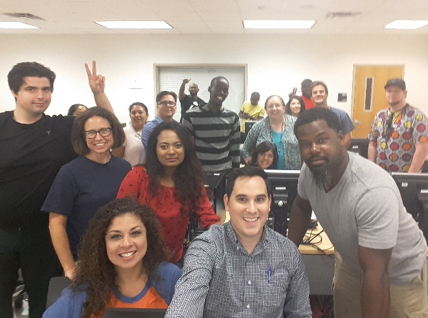 Submitted by: Pamela Ansboury
Submitted by: Pamela Ansboury
Adjunct Faculty Pamela Ansboury is shown with her Summer 2017 financial accounting night class. This is the course that will benefit from the recent award of an innovation grant for Fall 2017. This grant will provide resources to incorporate proven digital tools through the use of a computer on wheels (COWS) cabinet with tablet devices to provide real-time formative assessments of student’s learning. The tablets will be pre-loaded with free digital apps, such as quizlet, plickers, lino and kahoot, where data will be used by the instructor to tailor learning activities and by the students to assess depth of learning. Websites such as “accountingintheheadlines” will be used to cover real world cases and work solutions in a “herd” (team) environment using a problem based learning approach. The tablets will be pre-loaded with the class activities and ready to go without any loss of class time. This COWS solution is preferable to a student using their own mobile device to avoid issues where students do not have a mobile device, the device is not charged, the device has trouble getting to the website/app or other issues.
2. Better Serving Those Who Serve: Improving Veteran Classification at SAC
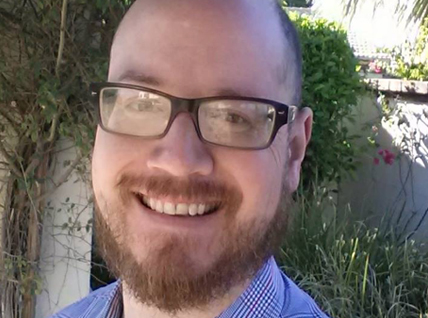 Submitted by: Ryan Lozano
Submitted by: Ryan Lozano
If we more accurately classify our veteran students’ status, e.g., retired, reserve, active, etc., we will have much better information with which to meet their needs, both academic and societal, as they transition from service to campus, or attend between deployments. I believe that if we can gather the information, analyze it, and perhaps add an additional, internal-use layer to the information already gathered by our VA office, we can do this. The project has the potential to greatly benefit student success from the perspective of more ably serving our veteran students to meet their educational and vocational needs, either during or following their service in our armed forces. Additionally, I will be coding by credit hour, to examine where our veteran students are at for their 15, 30, 45 touch points, whether or not they were counseled, and if so, by SAC or the VA.
3. With Spanish or French: CLEP to Graduate!
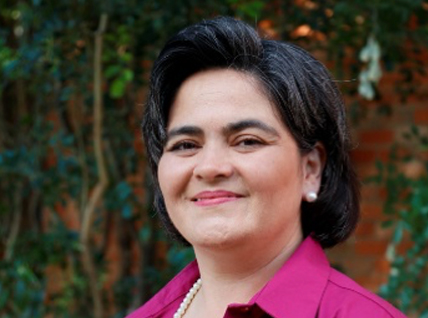 Submitted by: Betha Castellanos
Submitted by: Betha Castellanos
Spanish or French proficient students will earn core or graduation credits by exam through CLEP, reducing the coursework and cost needed to be successfully core complete and/or graduate with an Associate’s degree from SAC. Taking the CLEP will save eligible students at least six credit hours of language credits, which puts the student two courses closer to core completion and/or graduation. If full credit is granted from the exam (14 credits total), the additional credits can be applied towards graduation or transfer credits, based on the student’s degree program.
This initiative will sponsor the CLEP exam for 25-30 currently enrolled SAC Empowerment Center (EC) caseload participants.
4. Introduction to 3D Technologies
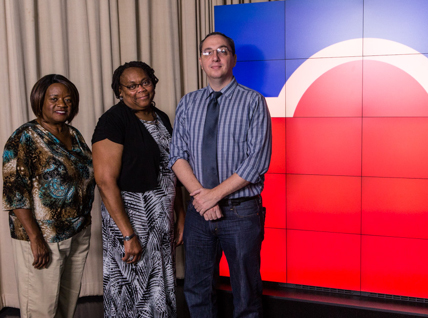 Submitted by: Barbara Knotts, Aaron Ellis, and Yvonne Turnball
Submitted by: Barbara Knotts, Aaron Ellis, and Yvonne Turnball
In 2016, the U.S. Department of Education awarded San Antonio College a $750,000 Title III STEM grant to further high technology training for its students. One aspect of that grant was for SAC to create a new 3D technologies class that would benefit degree programs and industries that have been traditionally under-served by advanced technical innovations. The funerary profession, for example, still uses centuries-old wax and clay sculpting techniques for creating reconstructive facial prosthetics. Our new class is designed to change this.
It is the belief of our team that innovative 3D technology shouldn’t be limited to engineers, architects, animators and game designers. We think that archaeologists, crime scene investigators, morticians, teachers and many others should be able to leverage this powerful tool in their professions.
To that end, students in our Introduction to 3D Technologies class will come from a wide variety of backgrounds and disciplines and will learn how to use many of the emerging technologies in the field. Stereo Lithographic 3D printing is a powerful rapid prototyping technique that has recently migrated from industry to the desktop market, with affordable prices for small businesses and entrepreneurs.
Our team hopes to add a FormLabs Form 2 SLA printer to the list of technologies our students will learn to use. At $3,500 the Form 2 printer would fit nicely between our low-end Makerbot FDM printer and our high-priced Stratasys Polyjet printer.
5. OCTA-TETRA Museum
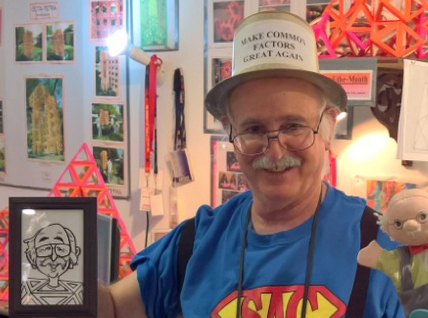 Submitted by: Dan Suttin
Submitted by: Dan Suttin
While you are working to gain knowledge in Math and the other STEM areas, don’t neglect to cultivate your imagination and creativity through the Arts. This combination will enable you to become Innovators. Add Art to STEM and you get STEAM.
So, I created a learning space where students learn about Art, Architecture, Design, Engineering, Science, and Mathematics all at the same time - where kids come from all over - kids of all ages, all grade levels - things to see, things to do, hands-on activities - bells and whistles - and then export it to the four winds with a Facebook album with pictures, videos, and interactive back-and-forth exchange.
Individuals, families, and school groups that come to the Museum partake of an interactive Voyage-of-Discovery and do a hands-on activity at the same time. More importantly, I pack it up and do these presentations and activities all around the city and beyond. Hundreds, yea thousands, of students have been impacted by the “OCTA-TETRA Museum project during this past year. The project is, of course, ongoing and year-round.
6. Developing a Vertically Aligned Curriculum to Teach Information Literacy Skills in Freshman Composition I and II
 Submitted by: Lawrence “Lennie” Irvin
Submitted by: Lawrence “Lennie” Irvin
The goal of this innovation grant is to create a set of vertically aligned assignments across both Freshman Composition I and II to develop Information Literacy Skills. This project’s aim is to develop a stair step of assignments that progress through both courses toward a level of information literacy that is foundational for student’s continued college education. Since the project’s focus is on Information Literacy, it will support San Antonio College’s Quality Enhancement Plan, “Fearless Learning,” which concentrates on Information Literacy with First Time in College Students. Part of the project will involve identifying the appropriate developmental range of concepts and skills and the end point where Freshmen should be at when completing their first year of college. Then, the assignments will be created to fit this range and developmental progression. Students growth in Information Literacy will be measured through pre- and post- tests at the beginning and end of the semester using the Standardizes Assessment of Information Literacy Skills Test. Fall 2017 will focus only on Freshman Composition I, but Spring 2018 will involve both Freshman Composition I and II.
7. History Active Learning Classrooms
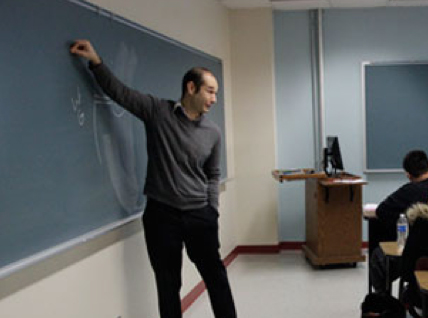 Submitted by: Erik Anderson
Submitted by: Erik Anderson
The History program would like to create three Active Learning Classroom. This would require removing the chalkboards, and painting the walls with dry erase paint (price is approx. $2.30 sq. ft., 350sq of wall (front and side per room) Active learning classrooms support an inquiry based/project based learning by allowing “open communication between students” and the ability for both the instructor and students to move around and collaborate during the class period. Active learning classrooms enhance the flipped classroom environment where students are responsible for reviewing the content before class while class time is focused on developing skills through working on projects. They classroom would be more of a laboratory where students would work with each other to create timelines to explore continuities and changes over time, project outline maps to visualize historical processes such as migration and trading patterns, use evidence from primary and secondary sources to create arguments, work in teams to outline a narrative or an argument, make group presentations, develop poster board sessions to education others, all while having an instructor with the primary role of “guiding” them as the hone these skills and apply learn how they map to the College’s Institutional Learning Outcomes and QEP – Information Literacy. Active Learning Classrooms are generally associated with STEM or Business classes, but other disciplines in higher education across the country are adapting this pedagogy. (For further information, please see the attached article “Reimagining the Introductory U.S. History Course,” by Nancy Quam-Wickham of California State University, Long Beach starting on page 13. The use of active learning classrooms would support all five SLOs for HIST 1301 and HIST 1301. Approximately 400 students use history classroom a semester. Thus, up to 1200 a year, with a 10 year lifespan on the paint, we anticipate that 12,000 student would benefit from the grant.
SAN ANTONIO COLLEGE AWARDED THE 2021 ASPEN PRIZE
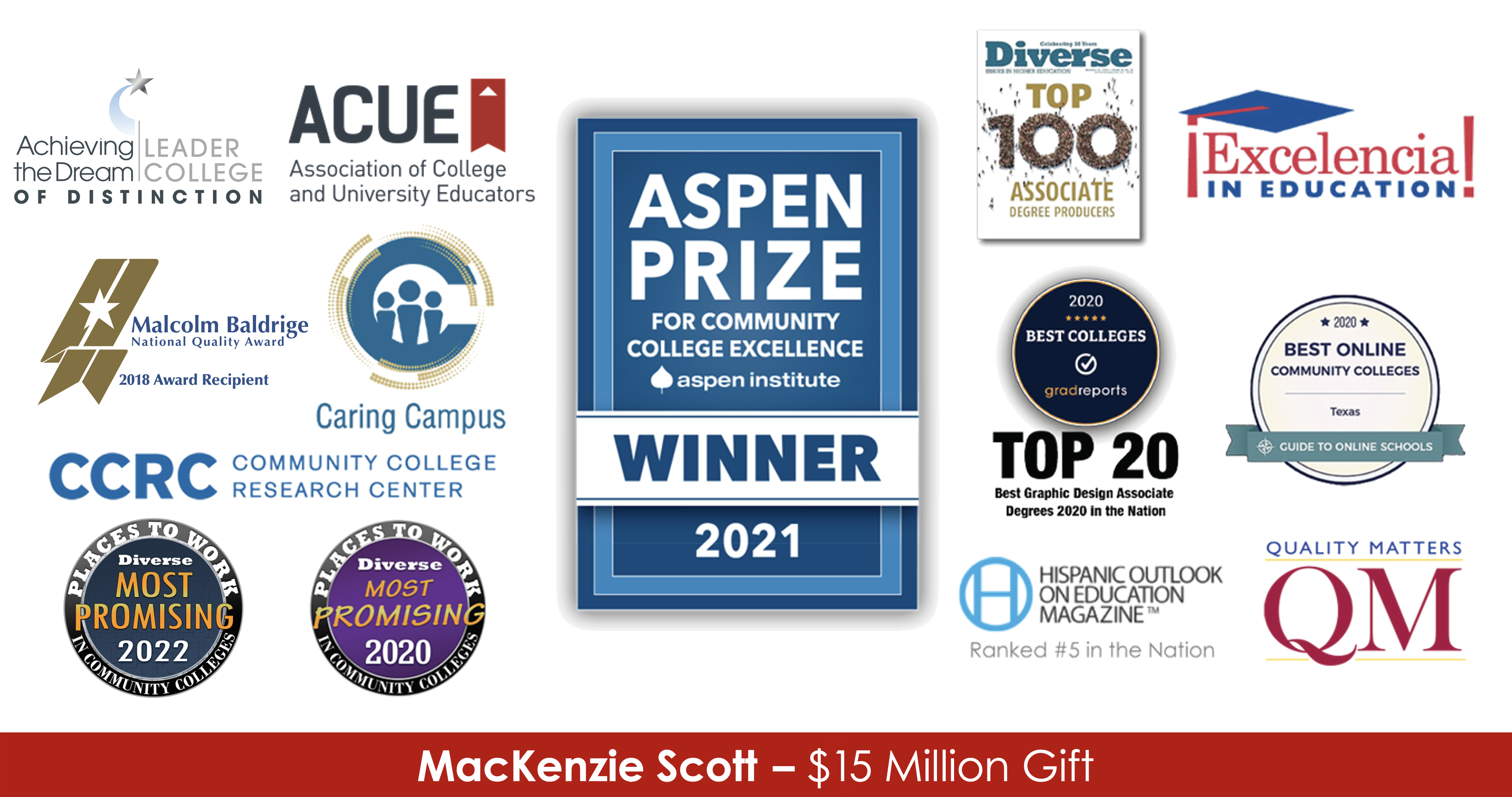 |
Dr. Francisco Solis
Interim President
Phone:
(210) 486-0959
Fax:
(210) 486-9254
Email:
sac-pres@alamo.edu
